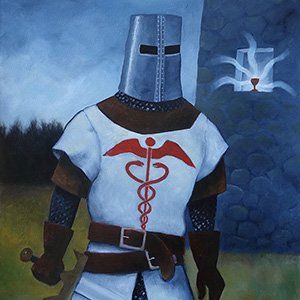February 2022
VOLUME XXXV, NUMBER 11
February 2022, VOLUME XXXV, NUMBER 11
cover story one
Tiered Cost-Sharing Health Insurance
Is this the Holy Grail?
By BRYAN DOWD, PhD, TYLER BOESE, AND TIM MCDONALD
The affordability of health care and health insurance in the U.S. is a problem that is beginning to affect the middle class, including those enrolled in employer-sponsored health insurance, the Affordable Care Act Exchanges and Medicare. Prior to the COVID-19 pandemic, the average premium for family coverage health insurance in 2019 was approximately 30% of median household income. Employees in high deductible plans face the potential of several thousand more dollars in out-of-pocket spending.
cover story two
Treating Spinal Cord Injuries: Developing a new model of care
BY LESLIE MORSE, DO
According to the Administration for Community Living (ACL), an operating division of the U.S. Department of Health and Human Services, there is an ongoing need for research that can improve services and outcomes for people with spinal cord injury (SCI)–research that can improve health and function, community living and employment. ACL statistics indicate there are approximately 296,000 individuals living with SCI in the United States; the average age of injury is 43.
Ophthalmology
Dry Eye Disease: The “That Condition” of Eye Care
BY GARY S. SCHWARTZ, MD, MA, AND JACOB R. LANG, OD, FAAO
One, thing that most medical specialties have in common with one another is they each have their version of That Condition (TC). Regardless of what type of doctor you are, you know what we are talking about. TC is that niggling condition that patients and doctors usually define by symptoms, rather than by disease entity. The symptoms can be chronic or acute, constant or intermittent, stable or progressive, and although they are usually neither life- nor sight-threatening, they are often significant enough to affect patients’ daily activities and quality of life.
Pain Management
Neurostimulation for Chronic Pain: A Rapidly Evolving Therapy
BY DAVID SCHULTZ, MD
Electrical stimulation has a long history of being used in medical practice; as early as 1500 BC, practitioners in ancient Greece and Rome used electric eels to treat pain. Scientific inquiry into mechanisms of pain led Melzack and Wall to introduce the gate control theory in 1966. This theory postulated a “gate” within the spinal cord dorsal horn which could be opened or closed to regulate pain transmission.
Diversity, Equity and Inclusion
Addressing COVID-19 Vaccine Equity: New partnership provides a roadmap for targeting disparities
By Lucas Nesse, JD
Nearly a million Americans have perished from COVID-19 – a startling figure that has had an immense impact on how we deliver care more equitably. This tragedy has exposed deeply disturbing health disparities between White Americans and Black, Native American and other people of color, while also revealing that our health care system has significant work to do to build trust with diverse communities.
AUGUST 2024
cover story
Assessing and Advancing Community Health: The overarching value of equity
BY Brooke Cunningham, MD, PhD
CONTACT
(612) 728-8600 | comments@mppub.com
758 Riverview Ave | St. Paul MN 55107
© Minnesota Physician Publishing · All Rights Reserved. 2023
quick links
We welcome the submission of manuscripts and letters for possible publication. All views and opinions expressed by authors of published articles are solely those of the authors and do not necessarily express those of Minnesota Physician Publishing Inc., or this publication. The contents herein are believed to be accurate but are not intended to replace medical, legal, tax, business or other professional advice or counsel. No part of this publication may be reprinted or reproduced without written permission from our publisher.












